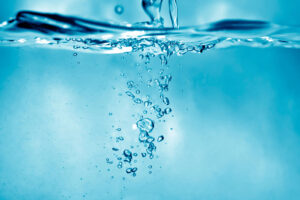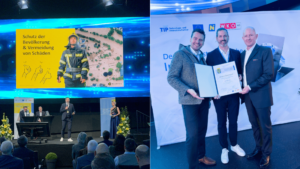Knowing what is happening in the sewer is critical to the efficient operation of sewer systems. The amount of wastewater flowing through the network has a direct impact on environmental pollution, the capacity of wastewater treatment plants and their energy requirements for wastewater treatment. Flow data can be used to identify necessary construction measures and to detect damage or faults in the sewer network in good time.
Level and flow measurements in wastewater provide valuable insight into the condition and functionality of the wastewater network. For example, radar level measurements can be used to monitor heavy rainfall events, extraneous water discharges and other relevant events. This information may be sufficient for certain applications and existing structures.
The change in flow measurement
Traditionally, accurate measurement of wastewater flow has required complex structural measures to obtain reliable data. However, a recent revolution in sensor and transmission technology is opening up more and more applications where simple level measurement is no longer sufficient or would require extensive civil works.
Until now, many sewer operators have relied on structural measures to calculate flow. The wastewater flow was specifically influenced by the construction of venturi channels or weirs, so that a flow value could be determined by level measurements and mathematical calculations.
Modern measurement systems: Less complexity, more precision
In order to minimise the need for structural measures, more and more sensor manufacturers are offering advanced measuring systems that directly and accurately determine the flow rate. These systems measure the flow area (A) in square metres [m²] and the flow velocity (v) in metres per second [m/s] to calculate the flow rate in cubic metres per second [m³/s] or litres per second [l/s].
Magnetic inductive flowmeters (MID)
Magnetic inductive flowmeters are considered one of the most accurate and reliable methods of flow measurement. The flow rate is measured based on changes in the magnetic field of the flowing liquid. However, this method is very bulky and energy consuming and only works when there is complete flow through the sensor. MID systems offer high accuracy and are primarily used in areas where precision is of the utmost importance.
Measurement methods with low structural and energy requirements
Measurement methods with lower structural and energy requirements are divided into two categories: measurement in the medium and non-contact measurement. Lower accuracies compared to these flow measurements are accepted in order to significantly reduce installation and operating costs. As a result, not just one point in the sewer network can be monitored with the same or lower budget, but a large number of measurement points with minimal structural effort. Battery powered devices are a significant cost saving factor here.
Measurement in the medium
In this method, ultrasonic sensors are installed directly in the wastewater flow to measure the average flow velocity (v). In addition, the flow area (A) is determined by measuring the level, usually using a pressure probe, and taking into account the geometry of the sewer. However, this technique can have limitations, particularly at low water levels, when the flow velocity cannot be reliably measured, or when the sensors are heavily contaminated, which affects their accuracy.
Non-contact measurement
Non-contact measurement uses radar or laser systems to measure both the level and surface velocity of the wastewater flow. The level is used in conjunction with the channel geometry to calculate the flow area (A). The surface velocity gives an indication of the flow velocity, which is converted by manufacturer-specific algorithms to the mean flow velocity, which is then used to determine the flow rate. This method is particularly advantageous as it does not require direct contact with the wastewater and is therefore less susceptible to fouling, reducing maintenance costs.
| Pulsar Microflow-i |
Flowtronics Beluga |
WAS |
Ubertone UB-Flow AV |
|
| USP |
|
|
|
|
| Measurement method | Radar | Ultrasound Doppler | Ultrasound Doppler | Ultrasound Doppler |
| Output unit | Surface velocity | Flow rate | mean flow velocity and level | Average flow velocity |
| Signal interface | 4-20mA and local radio connection | 4-20mA or RS485 | RS485 | RS485 Modbus |
| Sensor configuration | Pulsar via HART protocol (optional) | For 4-20mA operation: via manufacturer’s equipment | None | None |
| Microtronics platform configuration | 4-20mA interface configuration, calculation channels with interpolation point table | Licence sensor configuration via RS485 | Calculation channels with interpolation point table | Calculation channels with interpolation point table |
| Microtronics logger | Jellox | myDatalogEASY IoT | myDatalogEASY IoT | myDatalogEASY IoT |
| Flow determination |
On request Combined with level sensor |
Verfügbar | Auf Anfrage |
On request Combined with level sensor |


